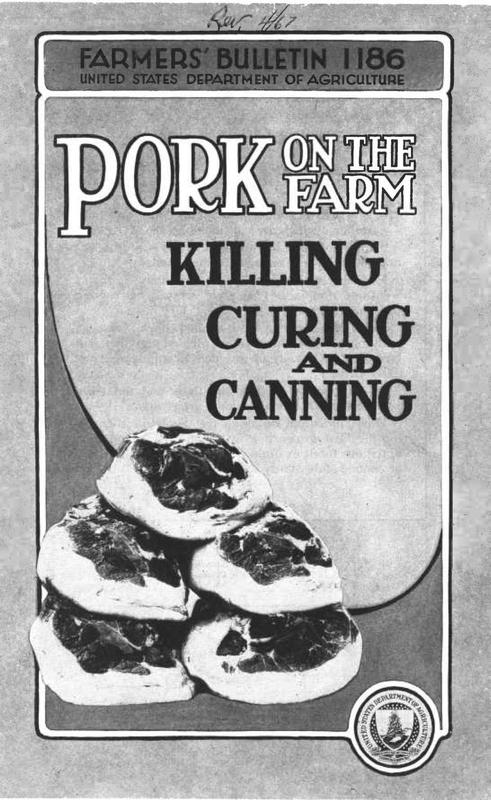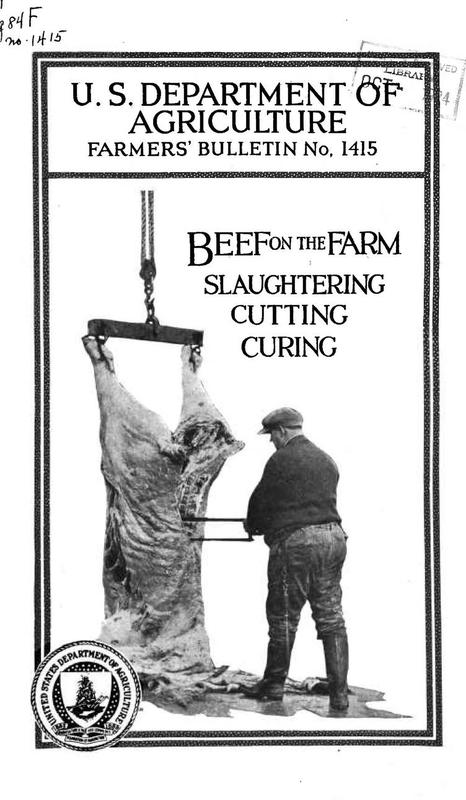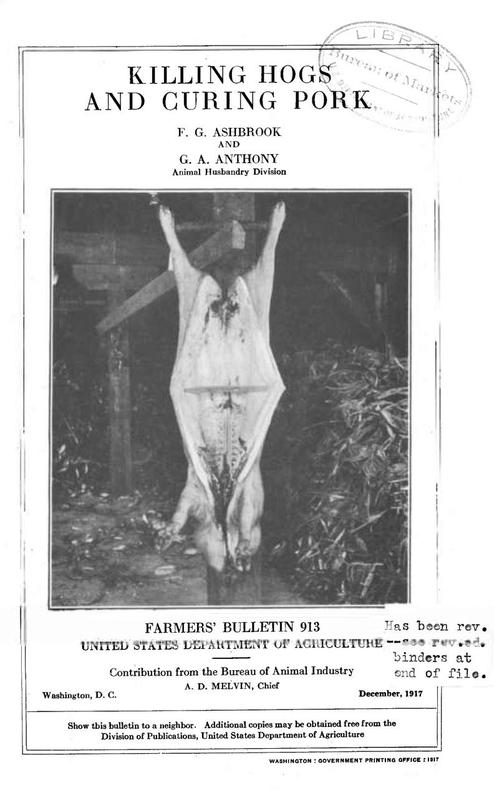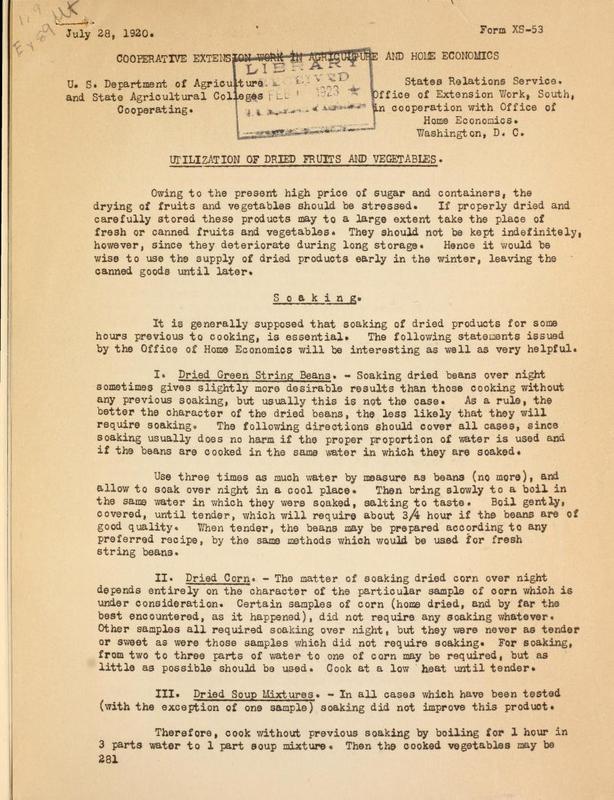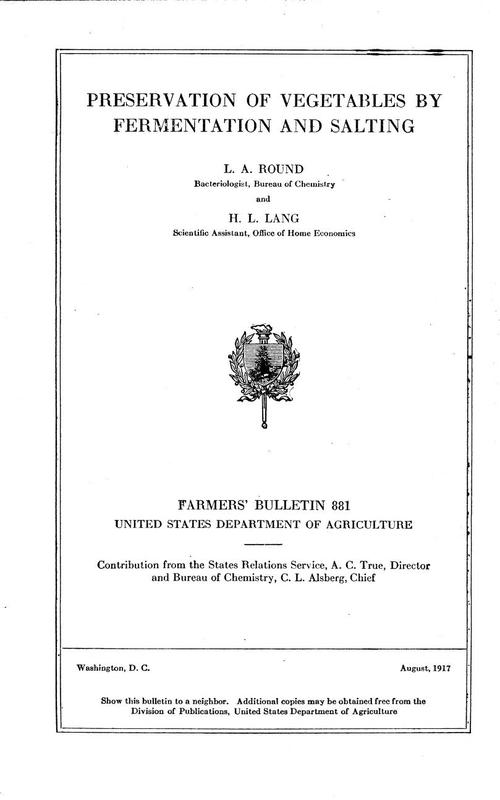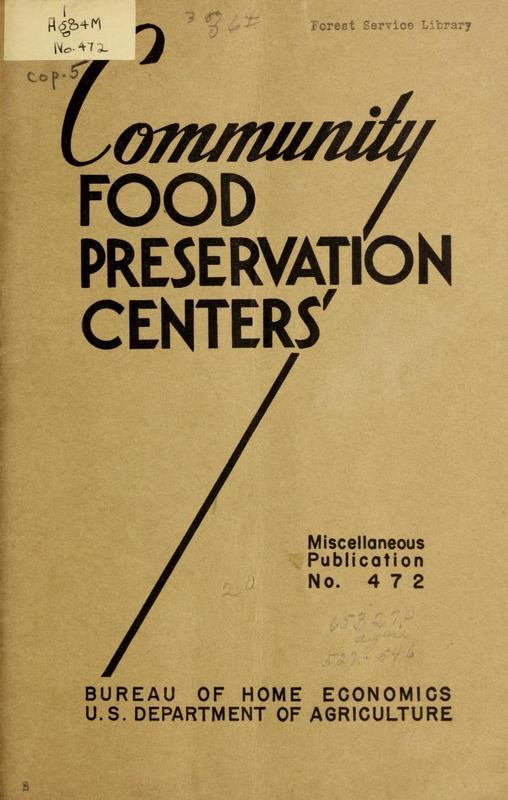USDA Historical Publications on Home Food Preservation
The U.S. Department of Agriculture created many publications that described the nature and processes of home food preservation.
Here is a small sample of historical USDA documents that addressed issues of food preservation for the farmer and homemaker, created around the time of Carver's bulletins.
(Click any image in this exhibit to get more information, including access to full text)
"Every farm should produce the pork and pork products which are consumed on that farm. Selling hogs and buying pork involves profits, but not for the farmer engaged in the practice.
Home curing of pork is an old practice. It nearly went out of style, but the style is rapidly becoming popular again.
Home-cured pork, fresh-canned pork, sausage, pudding, scrapple, headcheese, pickled pigs' feet, and lard afford a variety of products to supplement the daily meals.
Preparations of highly nutritious and palatable pork products for home use are easily made.
This publication discusses the details of converting the farm-grown hog into high-class, appetizing, nutritious foods available for use in the fresh, cured, or canned state at any season of the year."
"Slaughtering beef on the farm or ranch is the only means of obtaining fresh beef in many localities.
Home dressing of beef often makes it possible to procure meat at a considerable saving.
Blocky, healthy animals, in good condition, yield the most desirable beef.
Simple equipment and methods, described and illustrated in this bulletin, enable farmers to follow each step in the process of converting live animals into meat.
It is believed the procedure set forth in this bulletin provides a practical, modern, and satisfactory method of killing, cutting, and curing beef on the farm."
"Choice ham and breakfast bacon can be produced by the farmer for much less than the cost of purchased meat.
The cheapest meat a farmer can use is the product of his own farm.
This is also true of the suburban or town farmer who fattens one or two hogs on kitchen and truck-garden wastes.
Many farmers, for the first time, this year will have their own meat supply.
Home-cured pork of the right kind always has a ready market and in many cases it will prove the best way to market hogs.
The home curing of pork is a good practice and should be more extensively adopted.
This publication explains how to slaughter hogs and cure pork. Butchering and cutting up the carcass, lard rendering, brine and dry curing, smoking, and sausage making are all discussed in the following pages."
"Owing to the present high price of sugar and containers, the drying of fruits and vegetables should be stressed. If properly dried and carefully stored these products may to a large extent take the place of fresh or canned fruits and vegetables They should not be kept indefinitely however, since they deteriorate during long storage. Hence it would be wise to use the supply of dried products early in the winter, leaving the canned goods until later."
"Among the practical methods of conserving surplus food, especially worthy of consideration at this time, are those based on preservation by fermentation and salting or brining.
Owing to the enormous development of canning in this country during the last generation and the ease with which fresh vegetables may be obtained from some part of the country at almost any time of year, relatively little use has been made .of these methods of preserving, which were used by our fore- fathers and which are still used in Europe to a considerable extent. In this country the only substances commonly prepared by fermentation are sauerkraut and salt cucumber pickles, and, as a domestic product in some regions, "salted beans." Many other vegetables, however, lend themselves very readily to this method of preservation and furnish products quite different from the original substances, but which are none the less whole- some and appetizing and are greatly liked by many people. They also offer variety in the diet, which is an important consideration.
The object of this bulletin is to describe and explain methods of preservation by fermenting and salting, to indicate the purposes to which they are especially applicable, and to tell how the preserved products can best be prepared for table use.
The methods are not given with the view that they will be substituted for canning or drying, but simply for the purpose of making housekeepers more familiar with additional methods of preserving foods which they may use if they so desire."
"Community food preservation-families getting together in a neighborly way to can, brine, preserve or store an oversupply for a coming need-is as old as America and as new as all-out defense.
In normal, peaceful years, it is one of this country’s thrifty means of securing an all-the-year supply of good food. It has been proved a good way of tiding over droughts and depressions and meeting such food emergencies as are caused by floods and hurricanes. Now comes a new chapter in the food preservation story, the rallying of all Americans to conserve the Nation-building food supply as a vital part of our national defense."
 An official website of the United States government.
An official website of the United States government.


